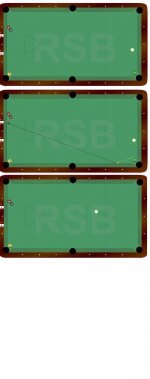Here's a layout that Fillipino great Leonardo Andam faced in a PBT event in New Bedford, Massachussetts. I believe the year was 1997. I don't recall who the oppnent was.
It's a rack that you might well remember if you were there watching the match, so if you were there and saw it, don't ruin it for the others. It's a rack in which Andam's play surprised me quite a bit.
The first table below shows the position Andam faced and table two shows how he attempted to break out the two clustered balls to create a runout.
The third table shows the position Andam faced when he failed to break the cluster.
Clarifying matters, the seven is almost but not quite frozen to the bottom rail and the eight is not dead into any pocket off the seven.
The two questions open for review are:
1) Was Andam's approach in breaking out the cluster correct? Why or why not?
2) What shot do you think Andam played once he failed to break out the cluster?
It's a rack that you might well remember if you were there watching the match, so if you were there and saw it, don't ruin it for the others. It's a rack in which Andam's play surprised me quite a bit.
The first table below shows the position Andam faced and table two shows how he attempted to break out the two clustered balls to create a runout.
The third table shows the position Andam faced when he failed to break the cluster.
Clarifying matters, the seven is almost but not quite frozen to the bottom rail and the eight is not dead into any pocket off the seven.
The two questions open for review are:
1) Was Andam's approach in breaking out the cluster correct? Why or why not?
2) What shot do you think Andam played once he failed to break out the cluster?
